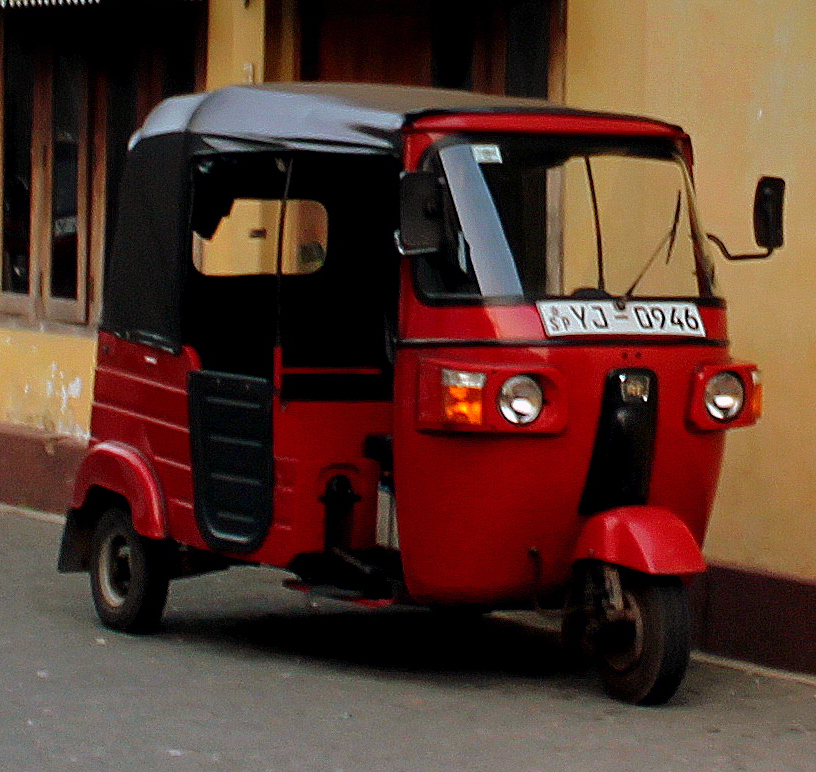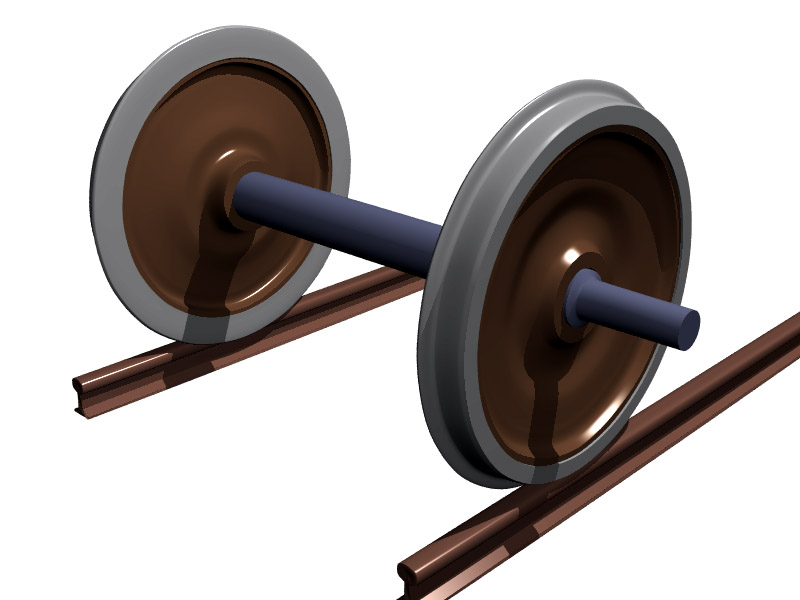|
Tata Magic Iris
The Tata Magic Iris is a 3-door, 4- or 5-seater cabover microvan/minivan ( MPV) manufactured by the Indian automaker Tata Motors. Powered by a 600cc one-cylinder diesel engine, it is intended to compete with auto-rickshaws. With its engine delivering and 31 Nm of torque, the vehicle has a top speed of just . The Magic Iris is made using an all steel body and frame – reinforced by reverse hat section chassis rails and beams, welded under its floor. The vehicle features all-around independent suspension with coil springs – MacPherson struts in the front, and semi-trailing arms in the rear. It uses a cabover design, meaning the driver seating on top of the front axle and the engine mounted at the rear, and with a vehicle length 1 cm shorter than the 1957 Fiat 500, the Magic Iris is one of the shortest four-seater cars ever produced — however its limited top speed would prohibit actually registering it as a ''car'' in many countries. See also * Tata Ace Zip * Kei car ... [...More Info...] [...Related Items...] OR: [Wikipedia] [Google] [Baidu] |
Tata Motors
Tata Motors Limited is an Indian multinational automotive manufacturing company, headquartered in Mumbai, India, which is part of the Tata Group. The company produces passenger cars, trucks, vans, coaches, buses. Formerly known as Tata Engineering and Locomotive Company (TELCO), the company was founded in 1945 as a manufacturer of locomotives. The company manufactured its first commercial vehicle in 1954 in a collaboration with Daimler-Benz AG, which ended in 1969. Tata Motors entered the passenger vehicle market in 1988 with the launch of the TataMobile followed by the Tata Sierra in 1991, becoming the first Indian manufacturer to achieve the capability of developing a competitive indigenous automobile. In 1998, Tata launched the first fully indigenous Indian passenger car, the Indica, and in 2008 launched the Tata Nano, the world's most affordable car. Tata Motors acquired the South Korean truck manufacturer Daewoo Commercial Vehicles Company in 2004. Tata Motors has be ... [...More Info...] [...Related Items...] OR: [Wikipedia] [Google] [Baidu] |
Auto-rickshaws
An auto rickshaw is a motorized version of the pulled rickshaw or cycle rickshaw. Most have three wheels and do not tilt. They are known by many terms in various countries including auto, auto rickshaw, baby taxi, mototaxi, pigeon, jonnybee, bajaj, chand gari, lapa, tuk-tuk, tum-tum, Keke-napep, Maruwa, 3wheel, pragya, bao-bao, easy bike, cng and tukxi. The auto rickshaw is a common form of urban transport, both as a vehicle for hire and for private use, in many countries around the world. They are especially common in countries with tropical or subtropical climates, since they usually are not fully enclosed, and in many developing countries because they are relatively inexpensive to own and operate. As of 2019, Bajaj Auto of India is the world's largest auto rickshaw manufacturer, selling 780,000 during the 2019 fiscal year. There are many different auto rickshaw designs. The most common type is characterized by a sheet-metal body or open frame resting on three wheels; a canvas r ... [...More Info...] [...Related Items...] OR: [Wikipedia] [Google] [Baidu] |
Rear-engined Vehicles
In automobile design, a rear-engine design layout places the engine at the rear of the vehicle. The center of gravity of the engine itself is behind the rear axle. This is not to be confused with the center of gravity of the whole vehicle, as an imbalance of such proportions would make it impossible to keep the front wheels on the ground. Rear-engined vehicles almost always have a rear-wheel drive car layout, but some are four wheel drive. This layout has the following features: *Packaging: since there is no need for a transmission tunnel, the floor can be flat. *Rear traction: having the engine located over the driven wheels increases downward pressure, which is helpful for grip on loose surfaces, although can be prone to oversteer. *Simplicity of manufacture: the engine is near the driven wheels, and the transmission can be merged with the differential to save space. This layout was once popular in small, inexpensive cars and light commercial vehicles. Today most car makers hav ... [...More Info...] [...Related Items...] OR: [Wikipedia] [Google] [Baidu] |
Minivans
Minivan (sometimes called simply as van) is a North American car classification for vehicles designed to transport passengers in the rear seating row(s), with reconfigurable seats in two or three rows. The equivalent classification in Europe is MPV (multi purpose vehicle). Minivans often have a 'one-box' or 'two-box' body configuration, a higher roof, a flat floor, sliding doors for rear passengers, and high H-point seating. Minivan was also equivalent in Southeast Asia as the Asian Utility Vehicle (AUV). Compared with a full-size van, most minivans are based on a passenger car platform and have a lower body. Early models such as the Ford Aerostar and Chevrolet Astro utilized a compact pickup truck platform. The largest size of minivans is also referred to as 'Large MPV' and became popular following the introduction of the 1984 Dodge Caravan and Renault Espace. Typically, these have platforms derived from D-segment passenger cars or compact pickups. Since the 1990s, the ... [...More Info...] [...Related Items...] OR: [Wikipedia] [Google] [Baidu] |
Microvans
A microvan is a van or minivan which is within the Japanese kei car classification or similar, and is smaller than a mini MPV. In China, these vehicles are nicknamed ''mian bao che'' ("bread-loaf vehicle") because of their shape. - China Car Times Similarly, in several Hispanic American countries, these vehicles are called ''pan de molde'', which means "bread loaf". In Indonesia, it is commonly called a minibus due to their tall roof, perceived as resembling a miniature ; the term is also used generally to refer to any type of three-row MPVs. Outside of China and Japan, microvans are also common in |
Cars Introduced In 2010
A car or automobile is a motor vehicle with wheels. Most definitions of ''cars'' say that they run primarily on roads, seat one to eight people, have four wheels, and mainly transport people instead of goods. The year 1886 is regarded as the birth year of the car, when German inventor Carl Benz patented his Benz Patent-Motorwagen. Cars became widely available during the 20th century. One of the first cars affordable by the masses was the 1908 Model T, an American car manufactured by the Ford Motor Company. Cars were rapidly adopted in the US, where they replaced animal-drawn carriages and carts. In Europe and other parts of the world, demand for automobiles did not increase until after World War II. The car is considered an essential part of the developed economy. Cars have controls for driving, parking, passenger comfort, and a variety of lights. Over the decades, additional features and controls have been added to vehicles, making them progressively more complex. These ... [...More Info...] [...Related Items...] OR: [Wikipedia] [Google] [Baidu] |
2010s Cars
1 (one, unit, unity) is a number representing a single or the only entity. 1 is also a numerical digit and represents a single unit of counting or measurement. For example, a line segment of ''unit length'' is a line segment of length 1. In conventions of sign where zero is considered neither positive nor negative, 1 is the first and smallest positive integer. It is also sometimes considered the first of the infinite sequence of natural numbers, followed by 2, although by other definitions 1 is the second natural number, following 0. The fundamental mathematical property of 1 is to be a multiplicative identity, meaning that any number multiplied by 1 equals the same number. Most if not all properties of 1 can be deduced from this. In advanced mathematics, a multiplicative identity is often denoted 1, even if it is not a number. 1 is by convention not considered a prime number; this was not universally accepted until the mid-20th century. Additionally, 1 is th ... [...More Info...] [...Related Items...] OR: [Wikipedia] [Google] [Baidu] |
Kei Car
Kei car (or , kanji: , "light automobile", ), known variously outside Japan as Japanese city car or Japanese microcar, is the Japanese vehicle category for the smallest highway-legal passenger cars with restricted dimensions and engine capacity. Similar Japanese categories exist for microvans, and kei trucks. These vehicles are most often the Japanese equivalent of the EU A-segment (city cars). The kei car category was created by the Japanese government in 1949, and the regulations have been revised several times since. These regulations specify a maximum vehicle size, engine capacity, and power output, so that owners may enjoy both tax and insurance benefits. In most rural areas they are also exempted from the requirement to certify that adequate parking is available for the vehicle."Owning a ... [...More Info...] [...Related Items...] OR: [Wikipedia] [Google] [Baidu] |
Fiat 500
The Fiat 500 ( it, Cinquecento, ) is a rear-engined, four-seat, small city car that was manufactured and marketed by Fiat Automobiles from 1957 until 1975 over a single generation in two-door saloon and two-door station wagon bodystyles. Launched as the ''Nuova (new) 500'' in July 1957, as a successor to the 500 "Topolino", it was an inexpensive and practical small car. Measuring long, and originally powered by a 479 cc two-cylinder, air-cooled engine, the 500 was smaller than Fiat's 600, launched two years earlier, and is considered one of the first purpose-designed city cars. In 1959, Dante Giacosa received a Compasso d'Oro industrial design prize for the Fiat 500. It was the first time when it was awarded to an automotive industry. In 2007, the 50th anniversary of the Nuova 500's launch, Fiat launched another new 500, stylistically inspired by the 1957 Nuova 500, featuring a front-mounted engine and front-wheel drive. In 2017 Fiat celebrated the 60th anniver ... [...More Info...] [...Related Items...] OR: [Wikipedia] [Google] [Baidu] |
Rear-engine Design
In automobile design, a rear-engine design layout places the engine at the rear of the vehicle. The center of gravity of the engine itself is behind the rear axle. This is not to be confused with the center of gravity of the whole vehicle, as an imbalance of such proportions would make it impossible to keep the front wheels on the ground. Rear-engined vehicles almost always have a rear-wheel drive car layout, but some are four wheel drive. This layout has the following features: *Packaging: since there is no need for a transmission tunnel, the floor can be flat. *Rear traction: having the engine located over the driven wheels increases downward pressure, which is helpful for grip on loose surfaces, although can be prone to oversteer. *Simplicity of manufacture: the engine is near the driven wheels, and the transmission can be merged with the differential to save space. This layout was once popular in small, inexpensive cars and light commercial vehicles. Today most car makers hav ... [...More Info...] [...Related Items...] OR: [Wikipedia] [Google] [Baidu] |
Axle
An axle or axletree is a central shaft for a rotating wheel or gear. On wheeled vehicles, the axle may be fixed to the wheels, rotating with them, or fixed to the vehicle, with the wheels rotating around the axle. In the former case, bearings or bushings are provided at the mounting points where the axle is supported. In the latter case, a bearing or bushing sits inside a central hole in the wheel to allow the wheel or gear to rotate around the axle. Sometimes, especially on bicycles, the latter type axle is referred to as a '' spindle''. Terminology On cars and trucks, several senses of the word ''axle'' occur in casual usage, referring to the shaft itself, its housing, or simply any transverse pair of wheels. Strictly speaking, a shaft which rotates with the wheel, being either bolted or splined in fixed relation to it, is called an ''axle'' or ''axle shaft''. However, in looser usage, an entire assembly including the surrounding axle housing (typically a casting) i ... [...More Info...] [...Related Items...] OR: [Wikipedia] [Google] [Baidu] |








